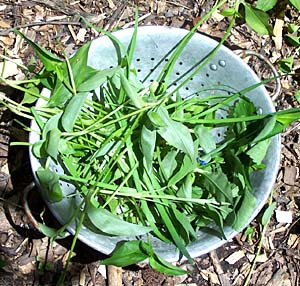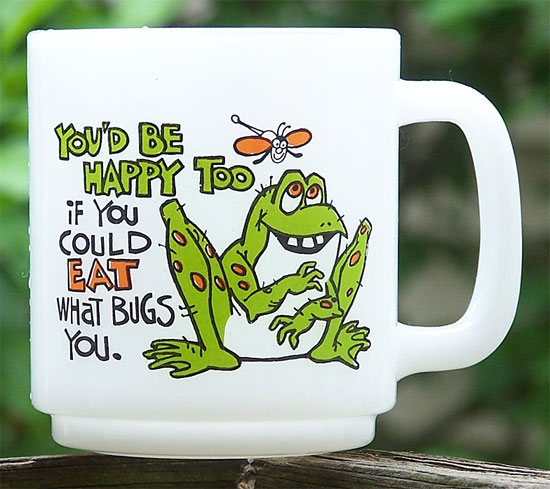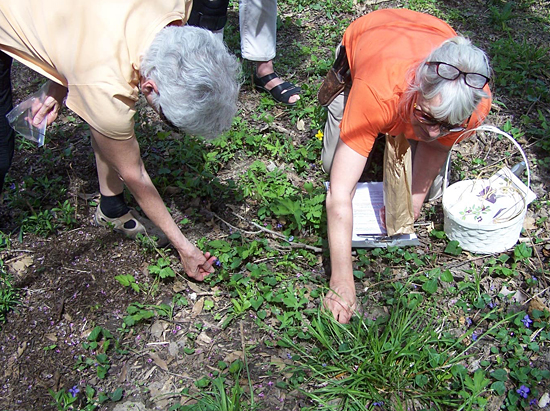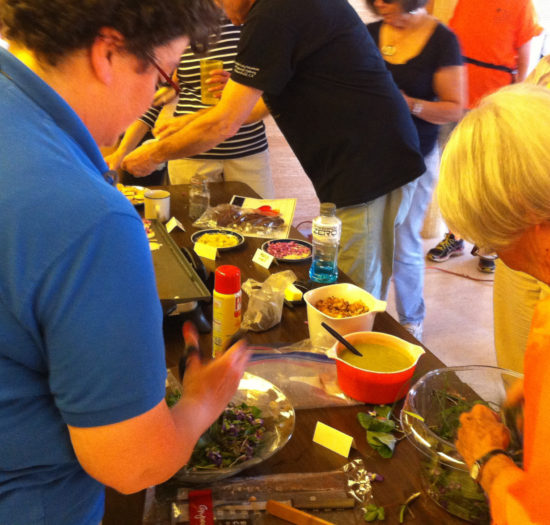A Couple of Quick and Easy Recipes

As a follow-up to my recent article on foraging for wild edibles, here are a couple more simple and easy ideas for getting interesting nutritious treats into your diet. It’s a lot of fun to go out in the garden and yard and decide “What looks good to eat today?” I also grow some things in my garden that could be fatal if I accidentally eat them so it’s critical to be able to identify what is in your foraging area.
Tuna Sandwiches With Wild Leaves
Ingredients:
Wild edible leaves
Fresh garden herbs
2 cans tuna
Chopped crunchy vegetables
Mayonnaise
Bread
Go out to the garden and pick some large edible leaves. Rinse and dry them. I used wild Violet, Dandelion and Asiatic Dayflower for my test. Set aside.
In addition pick some more conventional herbs if you have them that would taste good in tuna salad such as Sage, Garlic Chives and Lemon Balm. Wash and chop herbs, and put in mixing bowl. Add two cans of tuna and some chopped crunchy vegetables. I used the Healthy 8 mixture from Trader Joe’s. No I’m not on the Trader Joe’s payroll but I buy this mixture a lot because it’s really convenient to add to all kinds of recipes, both raw and cooked.
Mix mayonnaise into your tuna salad and toast your favorite bread. Put tuna mixture on bread and top with your foraged edible leaves in place of lettuce. Yummy!
Quick Weed Soup
Ingredients:
Wild edible leaves
Fresh garden herbs or greens
Broth or instant Miso soup packets
Kombu seaweed
Quick cooking vegetables such as edamame, mushrooms or sprouts
Optional – quick cooking proteins such as tofu cubes or small shrimp
Optional – wild Violet, Dandelion, Asiatic Dayflower or other edible flowers for garnish
Collect from your garden wild greens that taste good cooked such as Asiatic Dayflower, Dandelion and wild Violet. Be sure you are certain about identification, if not get help from an expert to avoid making mistakes with toxic plants. If you have other more conventional herbs from the garden that would taste good in an Asian-flavored soup, collect those too.
Wash herbs and leaves. Chop any herbs that need chopping.
Place herbs and leaves in a soup pot on the stove. Add your favorite broth or add water plus packets of instant Miso soup mix until the flavor is to your liking.
Cut sheets of Kombu seaweed into strips with a scissors and add to broth. Add quick cooking veggies and proteins if you are using any. Bring soup to a boil and check if the proteins are cooked through. Simmer for a few minutes more if needed, but if you used pre-cooked shrimp you probably won’t have to. If you have any edible flowers, sprinkle on top for garnish. If using Dandelion flowers, you should pull the petals out and discard the calyx to avoid bitterness. Enjoy!
In my opinion of the three wild leaves I used in my test, the Asiatic Dayflower was the most flavorful – it does taste like green beans as they say. The wild Violet and Dandelion are so nutritious I would not want to omit them but I would use them in smaller proportions for better overall flavor.
If you are interested you can read more of my recipes on my Fun With Food page.


